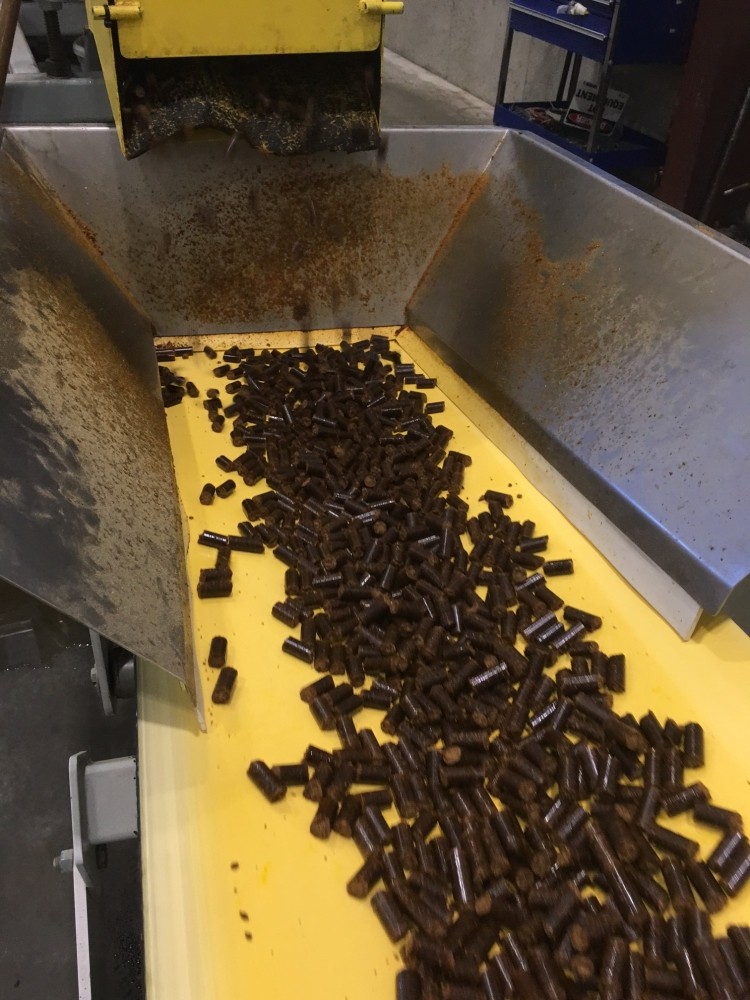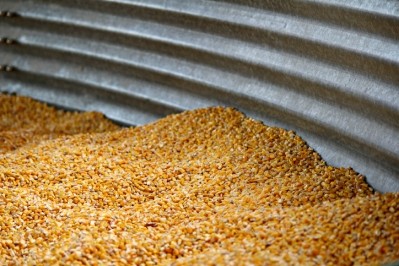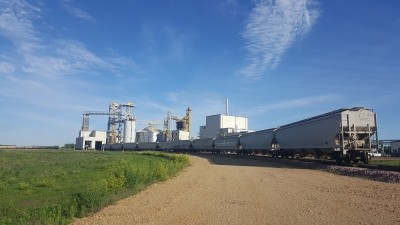Feed tech innovation could reduce reliance on fillers

The company is in the process of offering a series of equipment that either makes feed pellets out of dried distillers grains (DDGS) without fillers or binders or that is able to press feed tubs without limiters, said Samantha Western, company president. It also offers a low-heat, electric dryer.
Designing the new systems took about five years and the company originally also produced and sold the cubed DDG-based feed to establish a market while developing equipment, she told FeedNavigator. “We don’t make the product anymore, we only sell the equipment to feed manufacturers or ethanol plants,” she added.
The technology company recently moved headquarters to Colorado from their former facilities in Lexington, Nebraska, she said. “It’s a cross between headquarters and R&D lab,” she added.
Currently feed products produced by the company’s equipment are intended for the cattle industry, said Western, but there are plans to expand that.
“The first thing to develop here is something for the dairy, swine and poultry markets,” she said of the new location. “All of those have benefits from the DDGS, but we need an animal nutritionist to work with us.”
Company stages
The patented cube manufacturing system started when co-founder and company Director of Technology Mike Thomas was asked to be part of a group consulting on a pellet making process, said Western. “Companies have been tryng to make this cube for 20 years – and couldn’t do it,” she added.
Thomas had an idea for how to redesign the system based on past work with sawdust, she said. But the initial price tag was too high so Western and Thomas started Rayeman to develop the idea.
“We started our own company to develop it and do it,” said Western. “That’s what we’ve been doing for the last 5-and-a-half-years.”
Although sales have primarily been in the US, the company is looking to develop an overseas market, she said. “We know how much potential there is overseas an all over the world,” she added.
Extruder system
The machine started with a bulk densification system, said Western, but the company has added patented heating and cooling technology to the design.
“The extruders are built to our specifications,” she said. “We get them and add patented technology to them to make a range cube without a need for fillers and binders so it’s 100% DDG and it doesn’t fall apart.”
The patented extruder and die system is able to produce cube pellets at 3/4, 7/16 and 5/16 of an inch, she said. Although the tube used could be altered if a different size or shape of pellet is required.
The machine produces about 5,000lb of pellets per hour and was designed to run continuously, said Western. “That’s the most efficient way to run it – it used to do 170lb an hour now [it does] 5,000lb an hour,” she added.
The extruder offers an opportunity for ethanol plants to produce a secondary revenue stream with the DDGS they generate, she said.
“We’re recycling something already recycled and making it more cost effective and more nutritious for the cow,” she said. “They beef up faster when they eat the supplements giving the rancher a better economic outlook.”
Tub press tech
The company also offers a redesigned automated tub press to make a 200lb lick tub for cattle, said Western. However, unlike many pressed tubs that include limiters to stop cows eating the product, the pressing system controls product consumption through density.
“The DDGS go through a process before it goes into the tub press as well as time, and pressure and heat to press the 200lb tub,” she said. “The feed is 1 to 3lb per head, per day and we control consumption using densification, not limiters.”
In addition to redesigning the press, the tub is made to Rayeman specifications and has been designed so the billet does not fall out if cows knock the tub over in the field, she said.
The systems are sold individually and in a package, she said. The packaged deal runs almost $10m.
“Two feed lines and one automated tub press is a module and that’s the ideal plant structure to have,” she said. “We [sell] it regionally – we protect the area and the person or company purchasing the equipment so the person next door can’t make the same exact product.”
Dryer details
An ongoing project for the company is a newly designed grain drying machine, said Western. The dryer can reduce moisture content in grain from 70% to 10-12% and reaches temperatures of 250-280 degrees Fahrenheit, which mean it does not pose a high heat risk.
The system has been designed to run on electricity instead of gas, she said, and does not have the same issues with explosion hazards from grain dust that a traditional grain dryer does.
The dryer can process from 100 tons to 600 tons of grain a day, though 300 tons a day is a typical load, she said.
The grain also can be removed at different times if a producer wants modified wets, said Western. “The dryer uses similar twin screw technology to spin and dry the grain itself and it can dump off – that’s where you have the opportunity to take out as much as you want,” she added.










